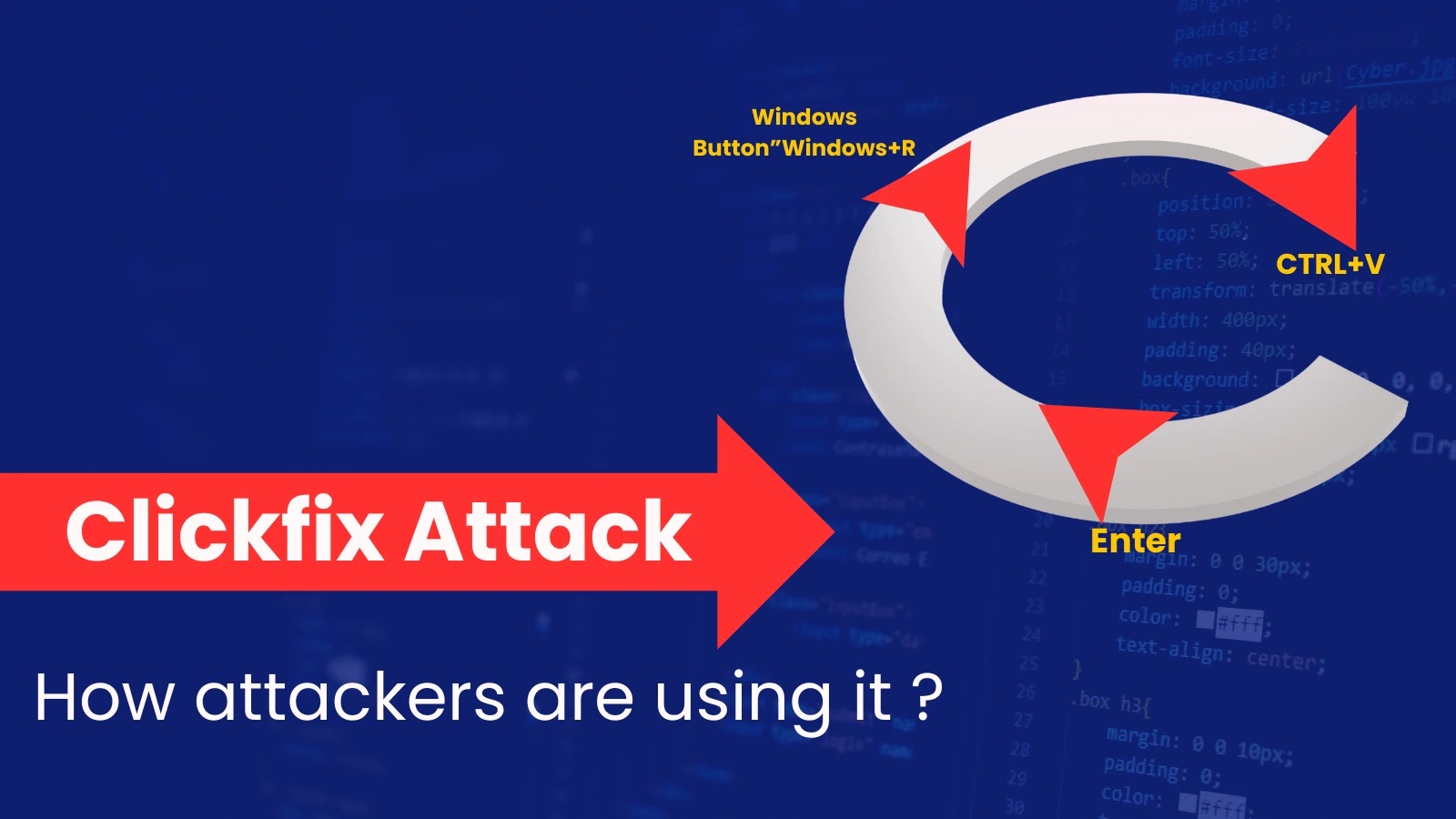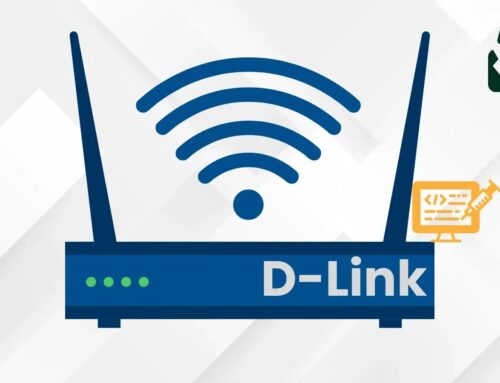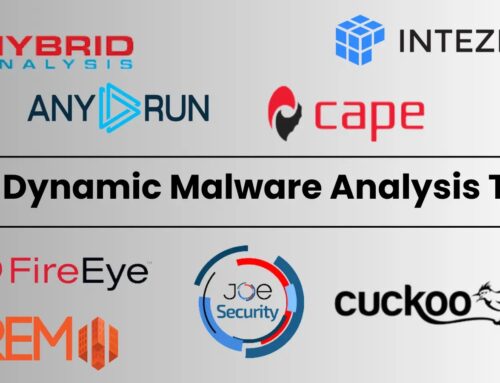
What is ClickFix Attack – How Hackers are Using it to Attack User Device With Malware
The cyber threat landscape is a relentless battleground, with new and increasingly sophisticated attack vectors emerging constantly. Among the most alarming developments in 2025 is the rapid rise of ClickFix attacks. This deceptive technique, a refined evolution of social engineering, has seen an unprecedented surge of 517% in the first half of 2025, solidifying its position as the second most common attack vector after traditional phishing and accounting for nearly 8% of all cyber incidents. Understanding ClickFix, its mechanics, and its impact is crucial for robust cybersecurity defense.
What is a ClickFix Attack?
A ClickFix attack is a highly sophisticated form of social engineering designed to trick users into inadvertently installing malware or granting illicit access to their devices. Unlike straightforward phishing, which often relies on obvious spoofing, ClickFix leverages deep psychological manipulation and often exploits subtle vulnerabilities in user trust and browsing habits. It misleads users into believing they are performing a legitimate action, such as fixing a perceived issue or completing a necessary step, when in reality, they are initiating a malicious payload download or execution.
How ClickFix Attacks Work: A Deceptive Modus Operandi
The ingenuity of ClickFix lies in its ability to mimic legitimate system prompts, software updates, or critical notifications. Attackers meticulously craft scenarios that induce a sense of urgency or necessity, compelling users to “fix” a fabricated problem. Here’s a breakdown of common tactics:
- False Error Messages: Pop-up windows or browser notifications disguised as system alerts, claiming a critical error, virus detection, or software malfunction. The “fix” button then installs malware.
- Bogus Software Updates: Prompting users to update seemingly essential software like web browsers, media players, or security tools. Clicking to “update” instead downloads malicious code.
- Exploitation of User Trust: Leveraging vulnerabilities in web browsers or legitimate-looking websites to display deceptive content that appears to be part of the trusted environment. For instance, a fake CAPTCHA or a “verify your account” prompt leading to malware.
- Drive-by Downloads with User Interaction: While drive-by downloads typically occur without user interaction, ClickFix orchestrates scenarios where the user themselves initiates the “download” by clicking what they believe is a harmless or necessary button.
- Sophisticated Redirection and Overlay Techniques: Attackers might use JavaScript or IFrames to overlay malicious content on top of legitimate sites, making it appear as if the real site is asking for an action, when it’s actually the attacker’s construct.
For instance, an attacker might craft a malicious website that, when visited, displays an urgent-looking pop-up: “Your browser is outdated! Click ‘Update Now’ to secure your connection.” A user, fearing security risks, clicks the button, unknowingly initiating a payload delivery. This method preys on immediate user reactions rather than prolonged scrutiny.
The Malware Payloads of ClickFix
The primary objective of a ClickFix attack is usually the installation of malware. The types of malware delivered can vary widely depending on the attacker’s goals:
- Ransomware: Encrypting user files and demanding a ransom for decryption.
- Spyware: Covertly monitoring user activities, keystrokes, and sensitive data.
- Adware: Flooding the device with unwanted advertisements, often compromising system performance.
- Trojans: Malicious programs disguised as legitimate software, providing backdoor access for attackers.
- Rootkits: Stealthy malware designed to hide its presence and grant persistent privileged access.
- Banking Trojans: Specifically designed to steal financial credentials and information.
The speed and stealth of ClickFix make it particularly dangerous, as users often realize they’ve been compromised only after significant damage has occurred.
Mitigation and Remediation Actions Against ClickFix Attacks
Defending against ClickFix requires a multi-layered approach involving technical controls, user education, and continuous vigilance. Given the nature of these attacks, no single solution is foolproof.
Organizational Strategies for Prevention:
- Advanced Email and Web Filtering: Deploy robust solutions that detect and block malicious links and suspicious attachments before they reach end-users.
- Endpoint Detection and Response (EDR): Implement EDR solutions to monitor endpoints for suspicious activities, even if initial malware bypasses signatures.
- Security Awareness Training: Conduct regular, engaging training sessions that specifically highlight social engineering tactics like ClickFix. Emphasize critical thinking before clicking.
- Application Whitelisting: Restrict the execution of unauthorized applications on endpoints. This prevents unknown executables from running, even if a user is tricked into downloading them.
- Regular Software and OS Updates: Ensure all operating systems, browsers, and applications are consistently patched. Attackers often exploit known vulnerabilities for which patches exist (e.g., refer to CVE-2023-38831 for a recent browser-based vulnerability).
- Network Segmentation: Limit lateral movement by segmenting networks, reducing the impact of a successful breach.
- Principle of Least Privilege: Ensure users and applications operate with the minimum necessary permissions.
User-Level Best Practices:
- Verify Before You Click: Always hover over links to see the actual URL before clicking. Be suspicious of unsolicited pop-ups or download prompts.
- Source Verification: If a prompt asks for an update, go directly to the official software vendor’s website to download it, rather than clicking a link in a pop-up.
- Use Reputable Security Software: Maintain up-to-date antivirus and anti-malware solutions with real-time protection.
- Enable Multi-Factor Authentication (MFA): Even if credentials are compromised, MFA adds a significant layer of security.
- Browser Security Settings: Configure web browsers to block pop-ups and enable security features like safe browsing.
- Backup Data Regularly: In the event of a successful malware attack, especially ransomware, having recent backups is critical for recovery.
Tools for Detection and Mitigation
| Tool Name | Purpose | Link |
|---|---|---|
| CrowdStrike Falcon Insight | Advanced EDR and threat hunting | CrowdStrike Website |
| Proofpoint Email Protection | Email security, URL rewriting, attachment sandboxing | Proofpoint Website |
| Microsoft Defender for Endpoint | Endpoint protection, EDR, vulnerability management | Microsoft Security Website |
| Carbon Black Endpoint Standard | NGAV and EDR for threat prevention and detection | VMware Carbon Black Website |
| KnowBe4 Security Awareness Platform | Simulated phishing and security awareness training | KnowBe4 Website |
Conclusion
The meteoric rise of ClickFix attacks necessitates immediate and comprehensive action from both organizations and individual users. As social engineering tactics become increasingly sophisticated, relying on human psychology rather than purely technical exploits, our defenses must evolve to match. Proactive security awareness training, coupled with robust technical controls and continuous monitoring, forms the bedrock of resilience against this insidious threat. Staying informed about emerging attack vectors like ClickFix is not merely advisable; it is essential for safeguarding digital assets and maintaining operational integrity in an ever-challenging cyber landscape.





